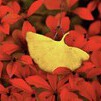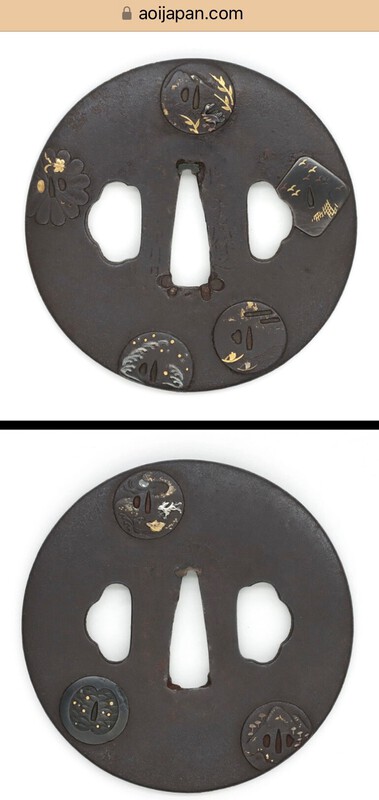-
Posts
1,480 -
Joined
-
Last visited
-
Days Won
3
Content Type
Profiles
Forums
Events
Store
Downloads
Gallery
Posts posted by Mark S.
-
-
I believe it translates to:
Soshu Saburo Masamune
-
3 hours ago, Winchester said:
Still thinking how to explain this to my wife… very interested. Thinking on it.
“Oh… that one? I’ve had that for YEARS!”
-
 2
2
-
-
Hi Dan,
Glad you are coming to show. I think Saturday is a better day, but any day is good. Although Saturday is usually the busiest day, some of the dealers travel very long distances and leave a little early on Sunday, so you sometimes don’t get to see quite as much. If you arrive early on Saturday, there is usually a class on the proper way to handle blades in the morning. There are usually other presentations on Saturday as well. Just an FYI… There is no official Shinsa this year.
Coming to a show can be a bit overwhelming. So much to look at and fall in love with!
 You will find most dealers are more than happy to talk to you and answer questions. Yes, they are there to sell, but most are very happy to educate you about their blades and to answer general questions as well. For the most part, you will see the show as not only a place to buy and sell, but as an educational experience, a chance to meet new people, and you will see many long time acquaintances catching up and reconnecting too.
You will find most dealers are more than happy to talk to you and answer questions. Yes, they are there to sell, but most are very happy to educate you about their blades and to answer general questions as well. For the most part, you will see the show as not only a place to buy and sell, but as an educational experience, a chance to meet new people, and you will see many long time acquaintances catching up and reconnecting too.
I also live locally. Unless something comes up, I will be there all 3 days just roaming around. If you have any specific questions, I’d be happy to meet you during the day at the show.
Hope you have a great time. Mark works hard and puts on a great show!
-
 2
2
-
 1
1
-
-
I think you did quite well.
-
 1
1
-
-
It’s iron. It will be fine.
-
 2
2
-
-
As always, thank you for my lesson. I feel a bit silly not putting that together. You are always very patient with us.
 I will see if Sasaoka-san was a member of the Team that day.
I will see if Sasaoka-san was a member of the Team that day.
-
Thank you so much Moriyama-san. I’ll be honest, there is nothing about the blade or paper that puts “Sasaoka” in context (at least that I can understand), but the “rare article” is interesting. I may reach out to Chris Bowen to see if someone at NTHK-NPO would be will to add information.
-
-
Yasurime are applied by the smith and not by the polisher. It wouldn’t be done during the polishing process.
-
 1
1
-
-
Just a bit of wear to the hadori portion of the polish?
-
 1
1
-
 1
1
-
-
2 hours ago, goo said:
The parts can be submerged in boiling water for a length of time and the oxide will turn blue to dark gray
Sometimes after this process, the tsuba can appear ‘dry’ or a bit ‘washed’. What do you recommend once this process is done to continue to get the color deeper and with the correct ‘sheen’, although that isn’t really the correct word.
-
11 hours ago, Matsunoki said:
You… will doubtless welcome views and opinions being challenged.

-
We don’t want to discourage you, but we have to be honest with you so you can know what to look for the next time you make a purchase. Read a lot here… read books… study blades presented on line, if you can, join a club or go to some sword shows. Ask questions. . We are happy to help anyone learn, but unfortunately it is a long learning curve and sometimes lessons can be expensive and a bit disappointing. Most of us have made mistakes and taken chances on items that didn’t pan out.
-
Looks like someone might have treated it to a buffing wheel or sandpaper or ??? No yokote and edges rounded off along with extensive scratching. Unfortunately, this one has not been treated well. ‘Might’ be save-able but not sure it really would be financially advisable.
-
What is it you would like to know?
-
On 3/12/2024 at 12:18 AM, Swordsman62 said:
Thanks Mark that is very helpful - what's your thought on which of the first two it might be?
Unfortunately, that is a bit above my pay grade. Regarding a good pic of the nakago, take a pic of the entire nakago that includes about 2” above the machi and all the way to the end of the nakago. It will help to see how nakago is finished, if suriage or machi okuri, overall condition, etc. As previously stated, it appears part of the mei (one or more characters) has been damaged or removed. Another helpful pic would be an overall pic of the whole blade showing size and shape.
-
Assuming Kuniyuki is the smith, according to Sesko’s A-Z Swordsmiths of Japan, only 3 Kuniyuki’s signed with that form of “yuki”. The last smith listed is modern and the nakago indicates some age.
KUNIYUKI (国之), Kenmu (建武, 1334-1338), Bizen – “Bishū Osafune-jū Kuniyuki” (備州長船住国之), it is said that he worked before in Sagami province, probably in Kamakura or in Yamanouchi, it is said that he bore the priest
name Shinki (神気)
KUNIYUKI (国之), Eishō (永正, 1504-1521), Higo – “Kiki chi-jū Bitchū no Kami Kuniyuki” (菊池住備中守国之), Sue-Enju school
KUNIYUKI (国之), Heisei (平成, 1989- ), Fukuoka – “Kuniyuki” (国之), real name Udo Toshiyuki (宇戸敏之) -
-
 3
3
-
-
As the holes were filled and unusable, it was probably fitted with fulled rounded/oval seppa. Rubbing possibly by the seppa that didn’t have the crescent cut out?
-
 1
1
-
-
-
23 hours ago, Mikaveli said:
I work with a few PhDs, and whilst they're clever guys, their field of expertise narrows as the depth of their knowledge increases. They certainly don't know everything and make mistakes like anyone else.
Hijack alert! But the above statement very much matches a quote I keep on my wall at work (originally came from my high school architectural drafting teacher):
ARCHITECTS are said to be people who know very little about a great deal and keep knowing less and less about more and more until they know practically nothing about everything.
ENGINEERS are said to be people who know a great deal about very little and keep knowing more and more about less and less until they know practically everything about nothing.
CONTRACTORS are said to be people who know practically everything about everything but end up knowing nothing about anything due to their association with Architects and Engineers.
HOMEOWNERS are said to be people who start out knowing nothing and never learn anything due to their association with Architects, Engineers and Contractors.
Maybe we could insert Sword Expert, Sword Dealer, Sword Collector, and Sword Newbie into these categories?

Hijack over… sorry.
-
 3
3
-
-
Here is the link…
-
 1
1
-
 1
1
-
-
So, I hope the OP will not mind, nor consider this a hijack. If so, I will delete. Several members who live in dry climates or have climate controlled storage say they leave their blades un-oiled. My question is, even if they do not get rust, do they risk oxidation ‘dulling or grey-ing’ by leaving the metal bare (assuming blade is in shirasaya) or is this practice safe if they are not experiencing rusting? Just curious.
-
If you do again, take pics of your process!!! Well done.
-
 1
1
-





Translation and thoughts on this sword
in General Nihonto Related Discussion
Posted
Did not see Ray’s response in translation section before I answered.